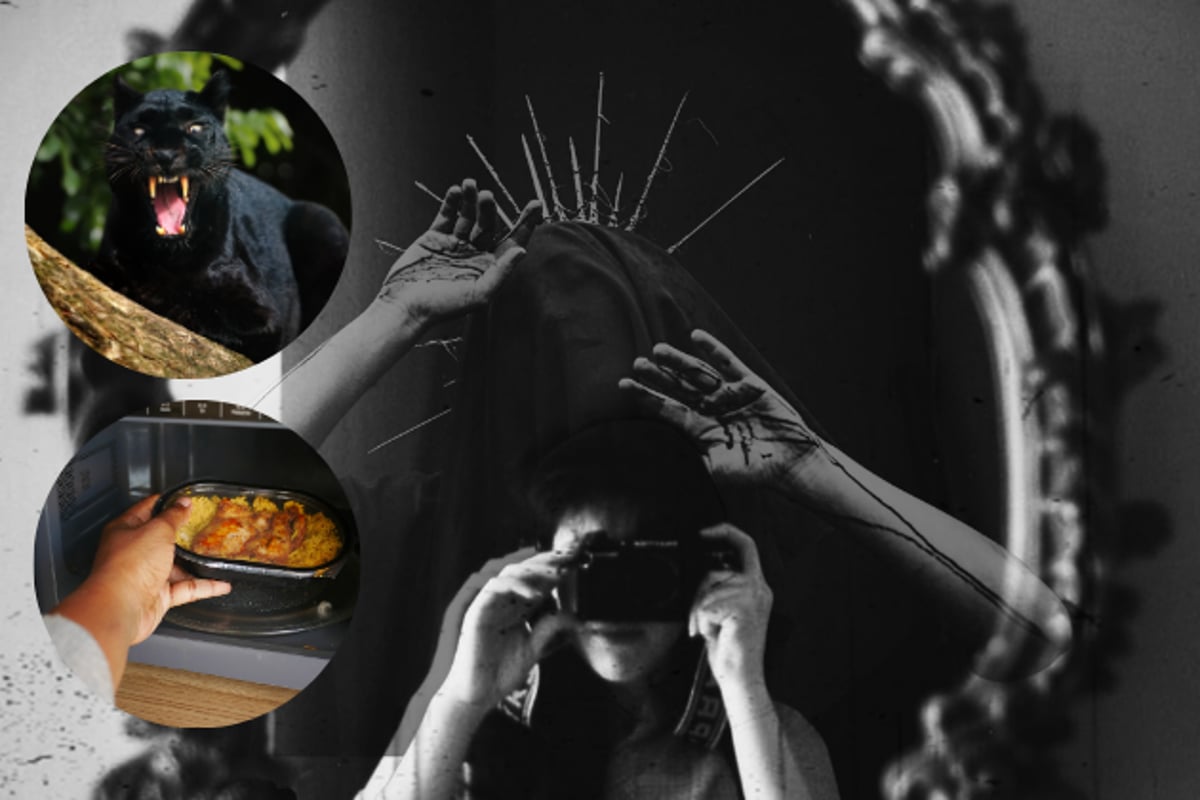Copyright glasgowworld

They are the spine-chilling tales that used to frequent playgrounds across the United Kingdom and around the world; the tale of an angry spirit appearing in a mirror after uttering their name three times, or the rather macabre instances of people using microwaves to dry off their beloved family pet. But the truth of the matter is that, in many cases, these “friend-of-a-friend’s-dog-walker’s-boyfriend” stories that used to permeate classrooms, when lessons were slightly boring that afternoon, turn out to be steeped in either folklore, simple moments of moral panic, or, in the case of one of our tales, why to have insurance for your vehicle. We’ve taken a look at five creepy tales that used to make the rounds near the monkey bars and the swings, and the truth behind the tall, if not nerve-wracking, tales of our youth ahead of Halloween 2025 so, should one of your younger family members come home extolling the concerns of a certain “Bloody Mary,” you can keep them assured that the truth is certainly not quite as strange as the fiction they became. But be warned - despite debunking some of these myths, the tales behind them are still not for the faint of heart… The Tale: Summoned during sleepovers, the ritual requires standing in a dark room (usually a bathroom) with a lit candle and chanting the name "Bloody Mary" a set number of times into the mirror. The spirit will then appear, often as a ghostly, bloodied woman or witch, ready to scratch the summoner’s face, rip their eyes out, or drag them into the mirror. The Truth: The legend has deep psychological and historical roots. It is widely linked to Queen Mary I of England (1516–1558), who earned the nickname "Bloody Mary" for executing hundreds of Protestants in her attempt to restore Catholicism. The ritual's focus on blood, mirrors, and the onset of womanhood is interpreted by folklorists as a rite-of-passage legend reflecting adolescent anxiety about puberty and self-image, but the apparition itself is often explained by the Troxler Effect, where staring at a single point in a dimly lit mirror causes visual distortions and hallucinations. The mirror image is already ambiguous in the dark, so as your brain struggles to process the static image, it begins to invent faces, distortions, and movement based on expectation and fear. The resulting figure may look like a witch, a monster, or an unknown person, but it is entirely a product of your own mind, not a paranormal entity. The only thing you summon when chanting "Bloody Mary" is an optical illusion caused by a tired brain staring into darkness. The Tale: A lone female driver is followed late at night by a truck or car that aggressively flashes its high beams and tailgates her. Terrified, she drives directly to a filling station or police station. When she is safe, the driver of the pursuing car rushes over to reveal that he was trying to warn her: a killer or escaped psychopath was hiding in her back seat and raising a weapon every time the lights went off. The Truth: This classic "friend of a friend" (FOAF) story emerged in the late 1960s as a cautionary tale of paranoia and self-reliance. While fictional, the core idea taps directly into anxiety about personal safety and the vulnerability of being alone in a car. It also often carries a subtle moral lesson: the female driver initially mistrusts the aggressive man (the pursuer/saviour) while failing to see the immediate, hidden danger right behind her. But the premise requires a killer to gamble their freedom by hiding in a random, moving car with no knowledge of the driver's route, intentions, or destination. This level of risk for a random target does not align with criminal logic. Statistically, you’re hundreds of thousands of times more likely to have your car stolen from their driveway than to find a killer hiding behind the passenger seat - if that is any form of relief! The Tale: An elderly, naive woman gives her toy poodle (or cat in some circumstances) a bath. Wishing to dry the pet quickly, she decides to place it inside her new microwave oven. She sets the timer for a minute or two on low heat, mistakenly believing it will dry the animal like a conventional oven. The pet dies a horrible, gruesome death—often described as "exploding"—and the owner frequently suffers a heart attack, or later sues the microwave manufacturer for failing to include a warning against drying pets. The Truth: This legend gained traction in the 1970s as microwave ovens became common household appliances in the UK and US. It’s primarily a story driven by fear of new technology and public ignorance regarding how microwave radiation works. The absurd addition of the lawsuit and the naïve owner's logic (setting it on "low" heat) served to anchor the story with a shred of bizarre plausibility. While there are anecdotal claims of a real, isolated incident in the US, the "exploding pet" detail and the subsequent lawsuit are entirely fictional embellishments used to propagate the story. In truth, the scenario of a pet spontaneously combusting in a microwave is physically impossible, and the story functions purely as a cautionary tale against misusing powerful modern technology. The Tale: A large, shadowy feline creature, often described as a black panther or puma with glowing eyes, is said to roam the desolate, wild moorlands of Cornwall, specifically Bodmin Moor. The Beast is held responsible for the violent mutilation and killing of farmers' livestock, despite repeated investigations failing to provide verifiable evidence of its existence. The Truth: The Beast of Bodmin Moor belongs to the phenomenon of Alien Big Cats (ABCs) in the British Isles. The modern version of the legend exploded in the late 1970s and 1980s following the passage of the Dangerous Wild Animals Act (1976). This law required licenses for exotic pets, leading to the highly likely (though unconfirmed) scenario that owners illegally released their pet big cats into the remote British countryside rather than face the expense or the animals' destruction - similar to tales of baby alligators being flushed down the toilet only to become giant alligators roaming the waterways. The myth is thus a collision of ancient folklore (wild moorlands and phantom hounds) with modern regulation and irresponsible human action. Despite decades of searching and an official UK Government investigation in 1995, there has never been any verifiable, sustained proof (like clear photographs or DNA) of a big cat colony. The "evidence" often turns out to be misidentification (large domestic cats, dogs, or shadows) or hoaxes (like the leopard skull found in 1995 that was determined to be from a leopard skin rug). The Tale: A cautionary schoolyard tale about a person who takes an excessive amount of LSD or other psychedelic drugs and enters a state of permanent delusion. The individual becomes convinced they are a piece of citrus fruit—most often an orange—and is so afraid of being eaten or squeezed that they either lock themselves away or attempt to peel their own skin. The Truth: This horrifying tale served as a potent piece of anti-drug propaganda. It was deliberately spread by authorities and the press during the "War on Drugs" in the late 1960s to discourage young people from experimenting with psychedelics, sensationalising the idea of irreversible psychological damage. In the UK, the story gained particular notoriety when it was falsely associated with Syd Barrett, the troubled founder of Pink Floyd, whose mental breakdown was inaccurately blamed on excessive drug use, as the legend endures as a terrifying warning about the total loss of sanity and identity. While drug-induced psychosis is real, the specific, permanent delusion of turning into a piece of fruit and attempting self-harm is a fabricated detail. Its enduring appeal lies in the primal fear of losing control over one's own identity and body. The ‘Orange Peel Man’ is a fictional, exaggerated cautionary tale created by anti-drug rhetoric - the idea that a person could permanently confuse themselves with a citrus fruit is a myth designed to scare. Have we covered some of the schoolyard tales you heard back when you were at school, or are there a couple - especially locally - that you remember scaring you in your youth? Share you favourite tale for a chance to be included in a reader’s list of Halloween urban legends by emailing the writer of this article.



